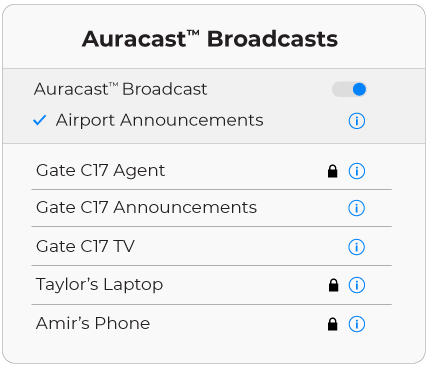The technical standards for the Bluetooth mark have remained more-or-less unchanged since 2003, however with Bluetooth LE, which stands for “Bluetooth Low Energy” this represents some huge changes over Bluetooth Classic which most people are already familiar with.
So what are the main advantages and improvements of Bluetooth LE?
Longer Battery Life
Bluetooth LE uses a new CODEC called LCCC – Low Complexity Communication Codec. A codec is what encodes and decodes digital signals. The new codec uses a new compression algorithm that allows a higher quality audio at a lower bitrate. Less data is transfered and lower power will be consumed as the devices are in use. Devices such as Bluetooth Headsets will now last longer on a single charge whilst in use.
Improved sound
With the new LCCC codec, audio quality should be a notable improvement over the older SBC – Sub Band Codec. Better quality compression delivers superior quality over lower bandwidths – compression artifacts are almost entirely eliminated giving a richer, fuller sound over the whole spectrum than previously achievable.
You can listen to a demo of the improvements of LCCC on the Bluetooth website.
Sharing Bluetooth via Auracast
There is now a method, using Bluetooth LE, to allow people to share the same audio via Auracast.
This allows people to broadcast an audio stream in a similar way to WiFi – you could select any publicly available audio stream from your phone to listen to.
For example in an airport, you could connect to their stream for audio announcements as you listened to an audio book or podcast; or in a sports bar with multiple games on the screens, it would be possible to stream a different audio signal for each screen for customers to connect to and listen on via their bluetooth headsets.



Support for Surround sound
Audio streams for each channel now have their own dedicated stream, so support for surround sound can now be implemented without the need for any extra software. Stereo sounds are also given their own channel giving left and right their own dedicated streams which also aids in improving audio quality.
Removing sound sync issues
Due to Bluetooth LE’s lower latency, this will reduce lag. This addresses sync issues that often appear with the current generation of Bluetooth where the sound often doesn’t quite synchronise with what you see on the screen.
Increased Range
Improvement in the data delivery ensures a greater range between Bluetooth LE devices.
Who suports Bluetooth LE?
With the uptake in Bluetooth LE accelerating you will notice these features being implemented in your devices in the next few years. Android 13 now supports Bluetooth LE, and there is documentation for Bluetooth LE on the Apple iOS website suggesting they will also be suppporting Bluetooth LE going forwards. So with two of the biggest hitters already onboard, it looks like users should be the real winner going forward here with the better quality and functionality that Bluetooth LE will afford.
Backwards compatability
It is worth noting that Bluetooth LE is backwards compatible with current versions of Bluetooth, so it is up to device manufacturers to implement these new features and ensure your older devices will work with your newer devices over Bluetooth so that whichever version is implemented won’t impact on basic functionality of your Bluetooth devices that utilise the older standard.
Bluetooth LE specification
| Bluetooth Low Energy (LE) | Bluetooth Classic | |
|---|---|---|
| Frequency Band | 2.4GHz ISM Band (2.402 – 2.480 GHz Utilized) | 2.4GHz ISM Band (2.402 – 2.480 GHz Utilized) |
| Channels | 40 channels with 2 MHz spacing (3 advertising channels/37 data channels) | 79 channels with 1 MHz spacing |
| Channel Usage | Frequency-Hopping Spread Spectrum (FHSS) | Frequency-Hopping Spread Spectrum (FHSS) |
| Modulation | GFSK | GFSK, π/4 DQPSK, 8DPSK |
| Data Rate | LE 2M PHY: 2 Mb/s LE 1M PHY: 1 Mb/s LE Coded PHY (S=2): 500 Kb/s LE Coded PHY (S=8): 125 Kb/s | EDR PHY (8DPSK): 3 Mb/s EDR PHY (π/4 DQPSK): 2 Mb/s BR PHY (GFSK): 1 Mb/s |
| Tx Power* | ≤ 100 mW (+20 dBm) | ≤ 100 mW (+20 dBm) |
| Rx Sensitivity | LE 2M PHY: ≤-70 dBm LE 1M PHY: ≤-70 dBm LE Coded PHY (S=2): ≤-75 dBm LE Coded PHY (S=8): ≤-82 dBm | ≤-70 dBm |
| Data Transports | Asynchronous Connection-oriented Isochronous Connection-oriented Asynchronous Connectionless Synchronous Connectionless Isochronous Connectionless | Asynchronous Connection-oriented Synchronous Connection-oriented |
| Communication Topologies | Point-to-Point (including piconet) Broadcast Mesh | Point-to-Point (including piconet) |
| Positioning Features | Presence: Advertising Direction: Direction Finding (AoA/AoD) Distance: RSSI, HADM (Coming) | N |
You can find more detailed specifications of the Bluetooth LE format on the official site here.
Another article you might enjoy










